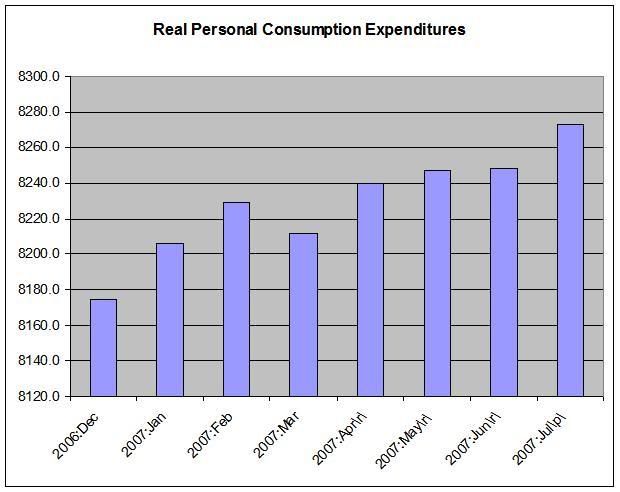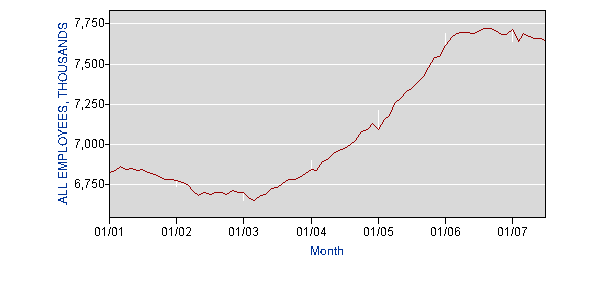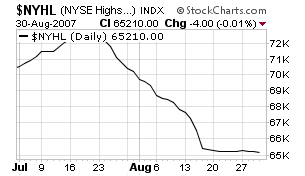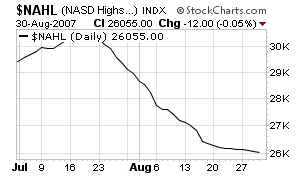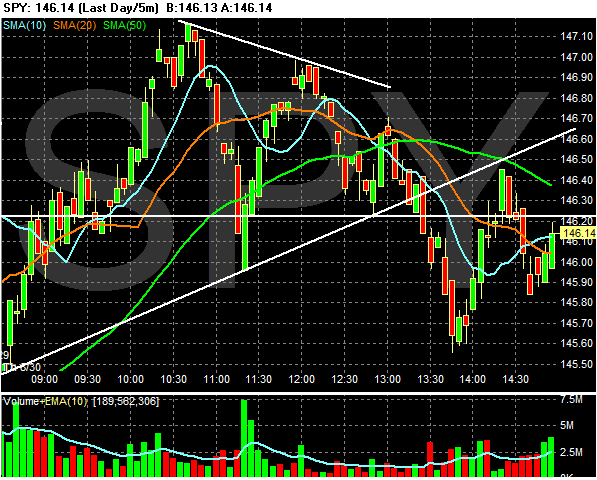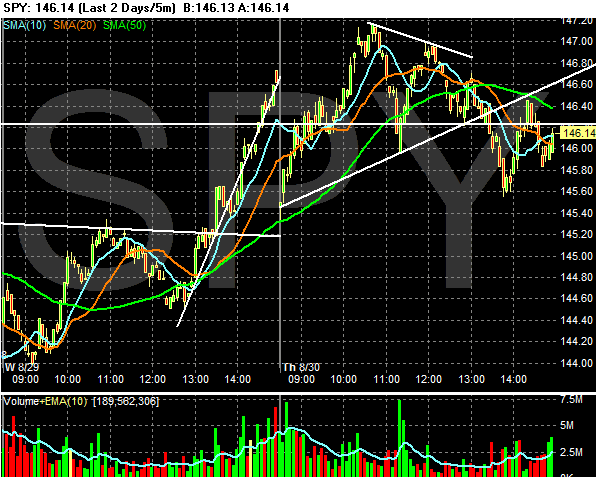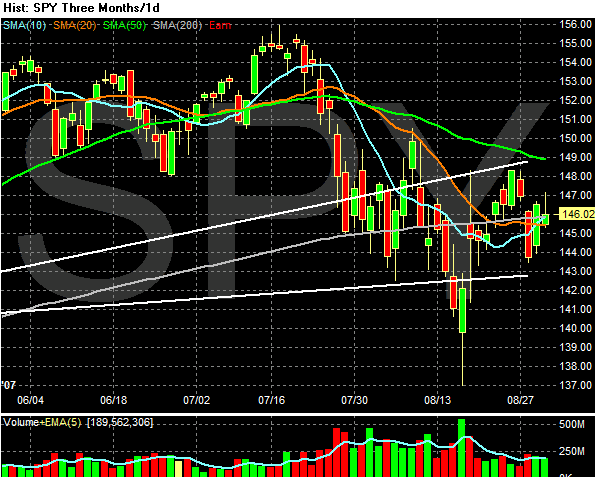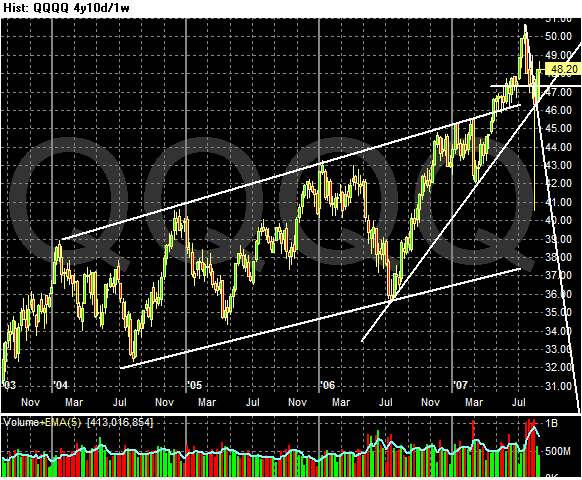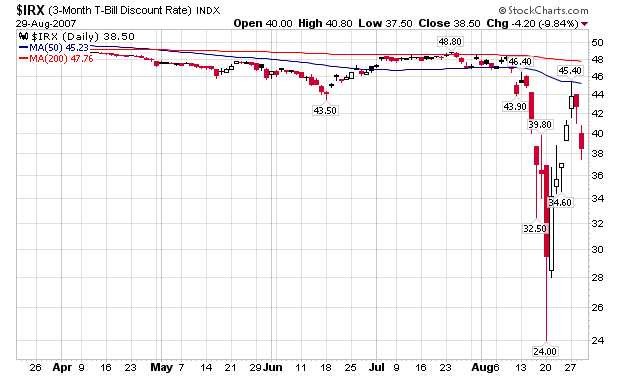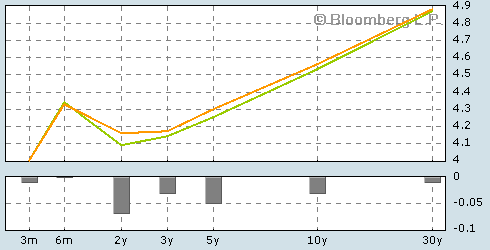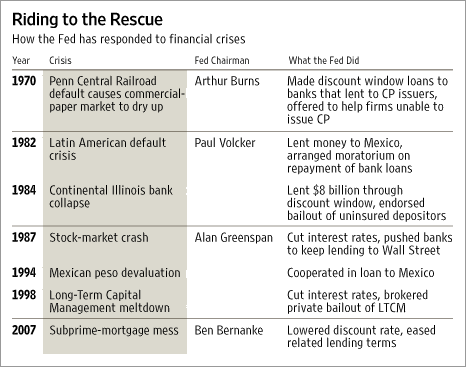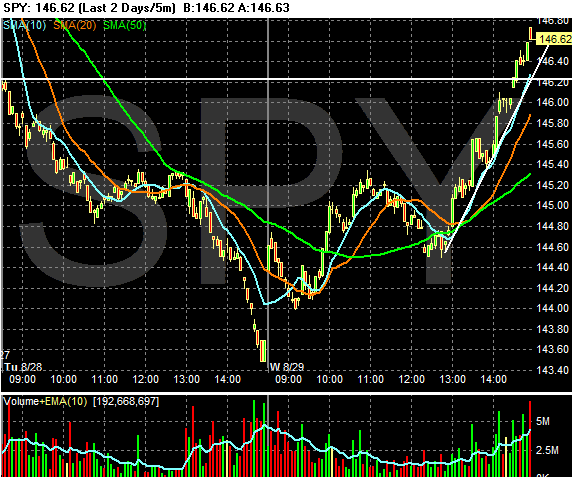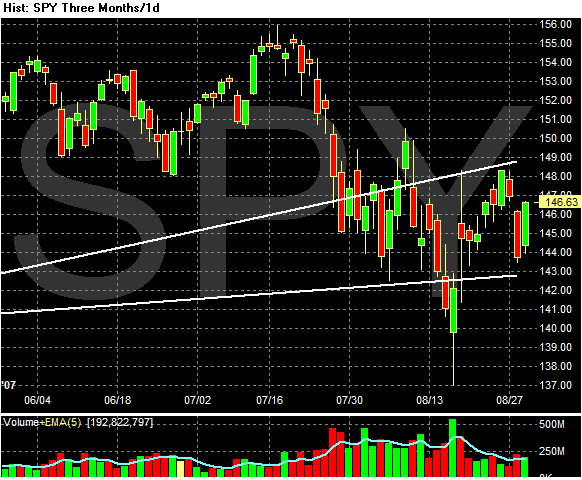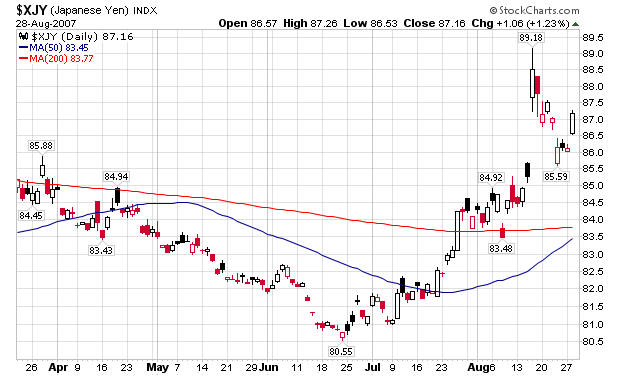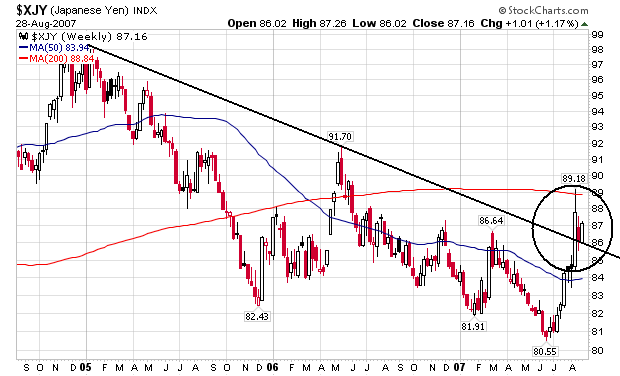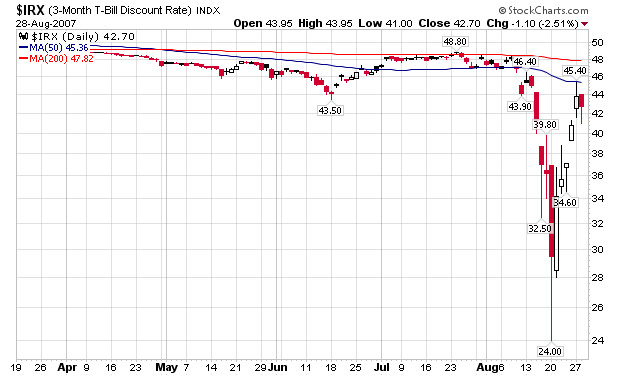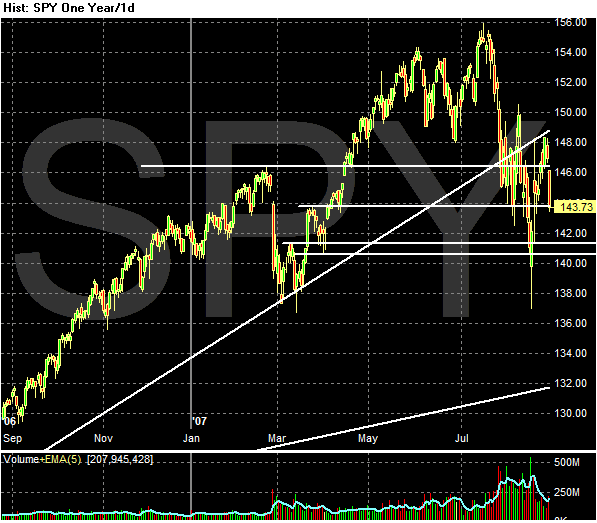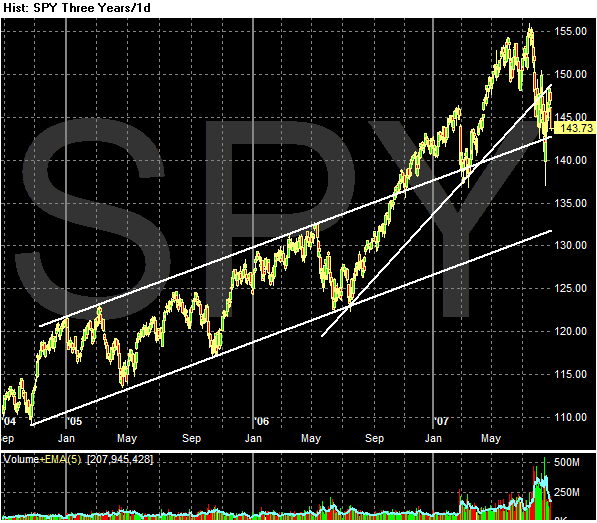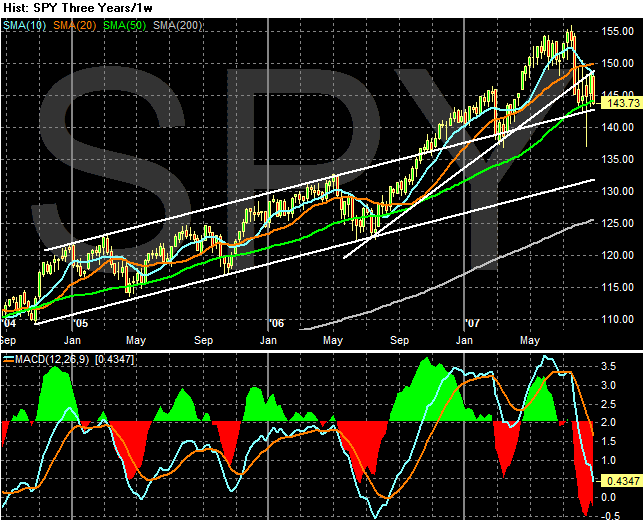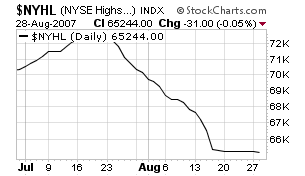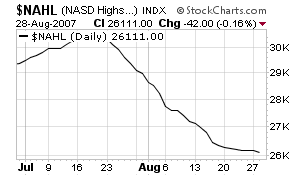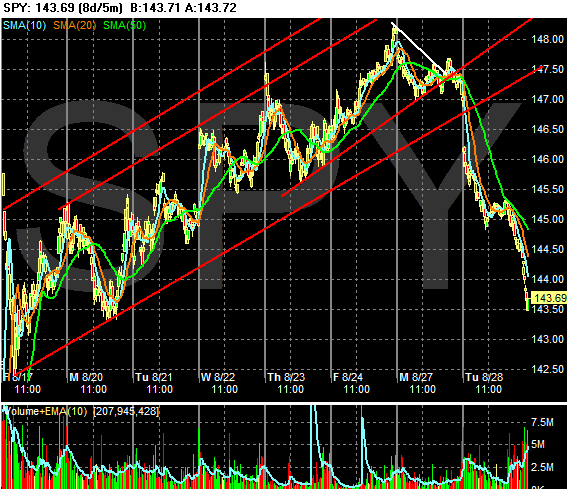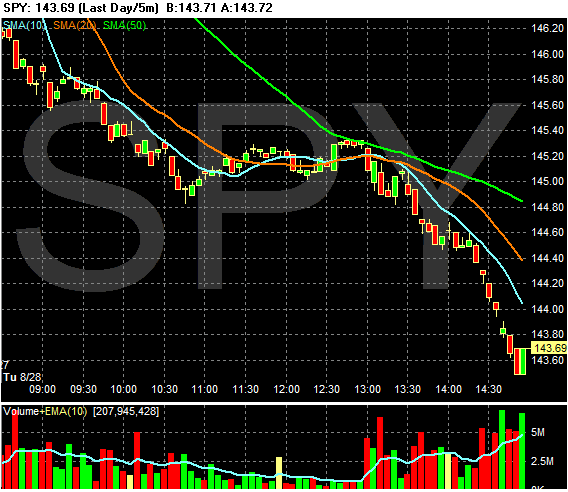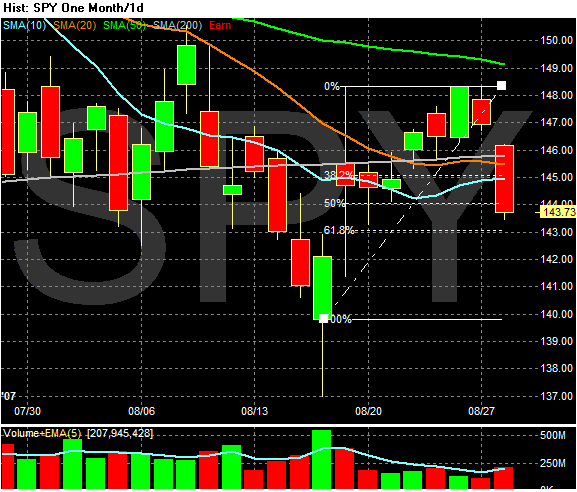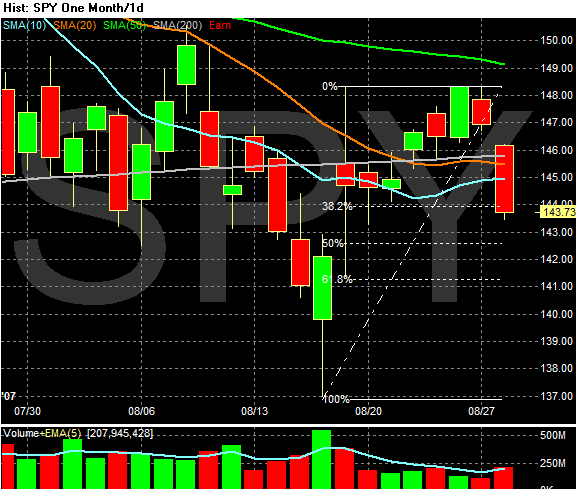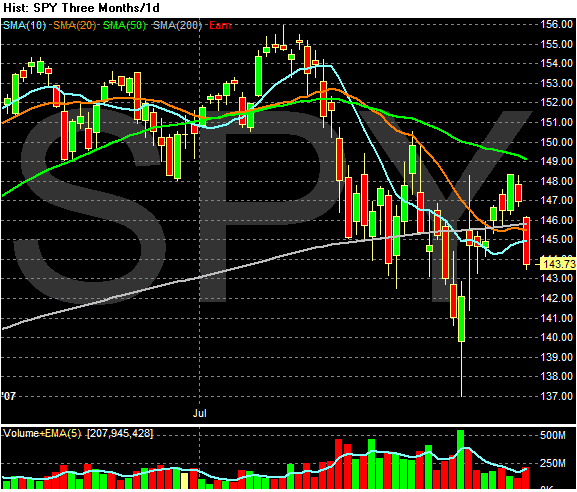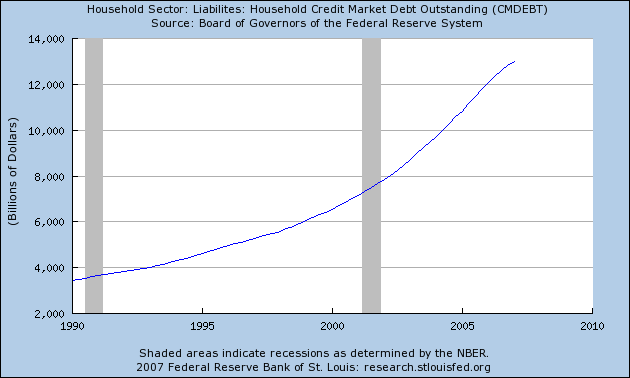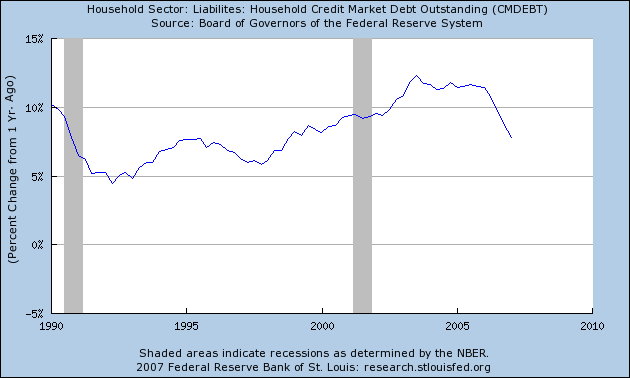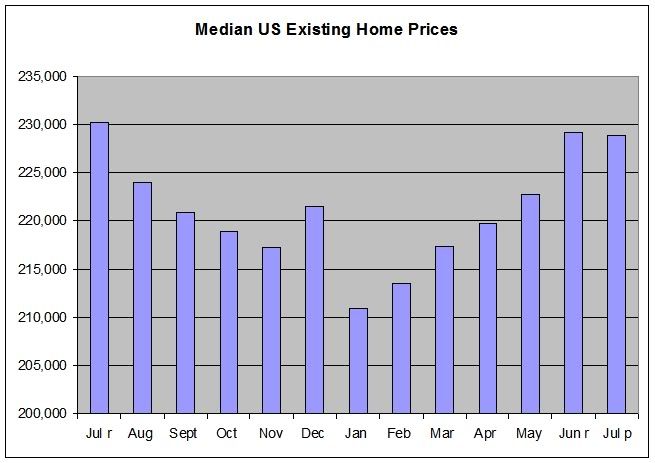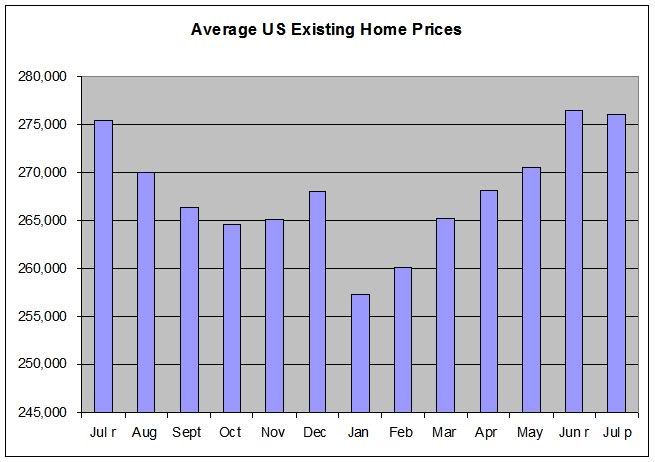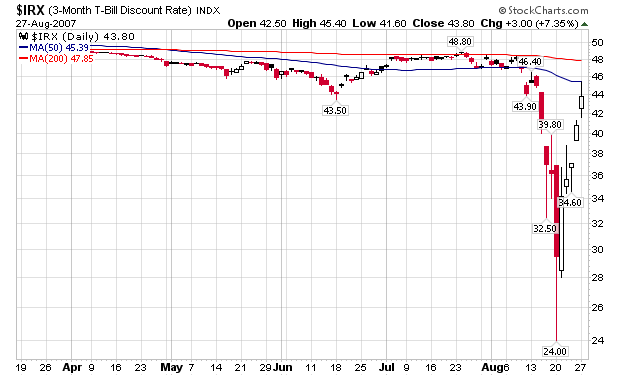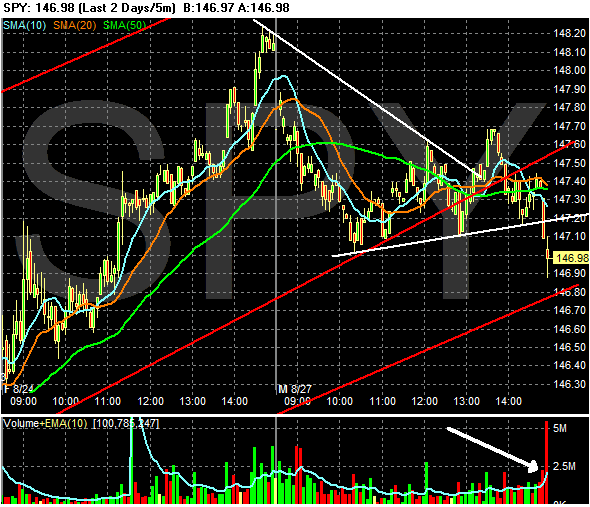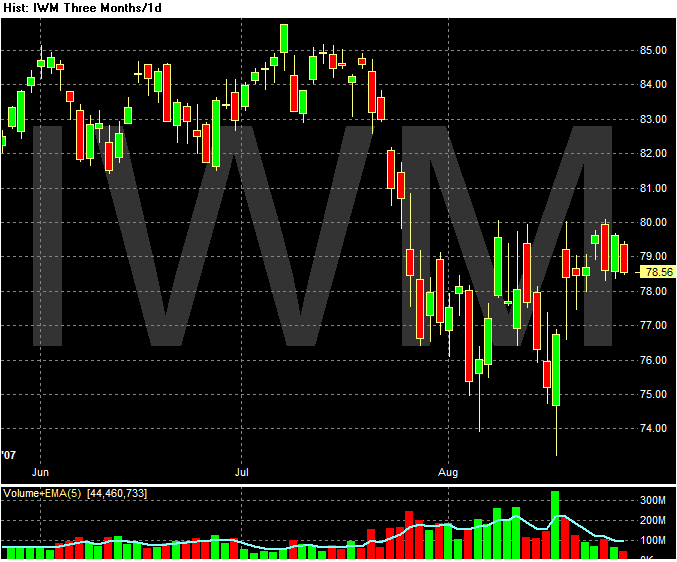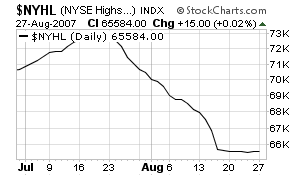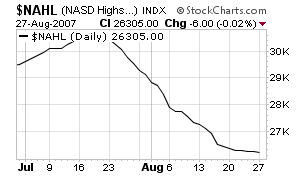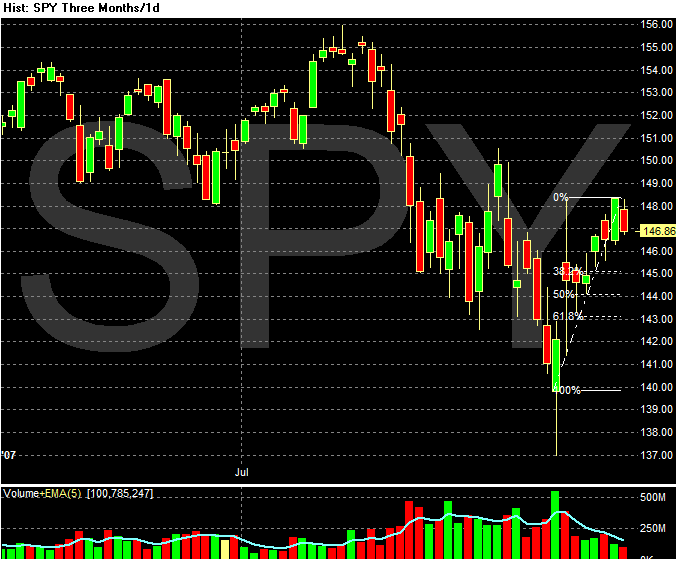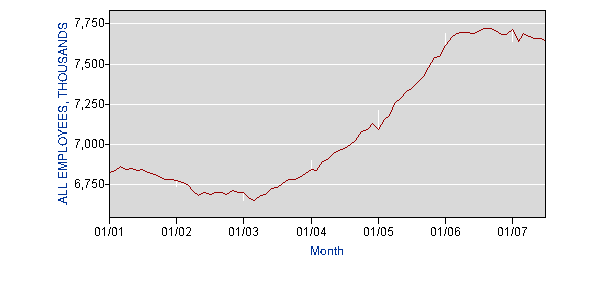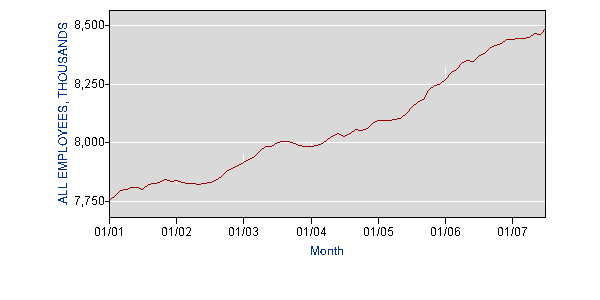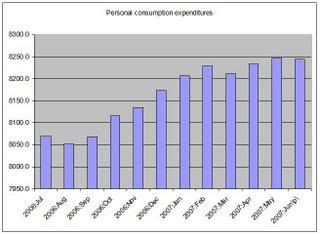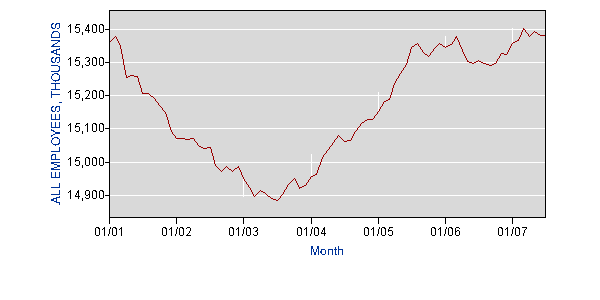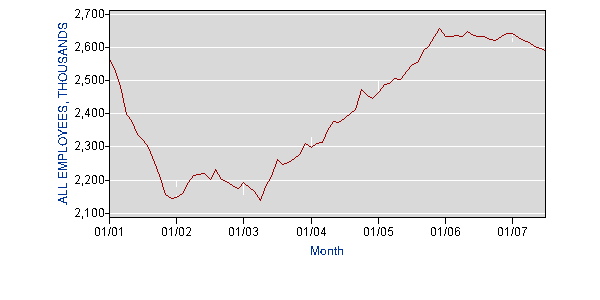First -- here's the weekly, 5-minute chart. This is pretty straight-forward. The markets formed a head and shoulders bottom on Tuesday and Wednesday then rallied starting at the low point established on late Tuesday. Notice we have a three day rally going into a holiday shortened week.

Here's the three-month daily chart. Notice that the market is still looking for a trend. Prices are centered around the 200 day SMA. The moving averages are clustered around the 200 day SMA. However, the 10 day SMA is now sloping upward and has moved through the 20 and 200 day SMA. This is a positive technical development. Remember, in a market rally we want the SMAs to be (from highest to lowest on the chart) shorter to longer. Right now the SMAs are slowing moving back into that rally position. However, we still have a long way to go and the jury is definitely out as to what will happen in the coming month.
Despite all of the uncertainty and volatility, the market has not moved below the 200 day SMA. That is also a positive development. While traders are nervous, they have not sent the average into firm bear market territory. There is definitely a wait and see what happens approach to the markets right now.
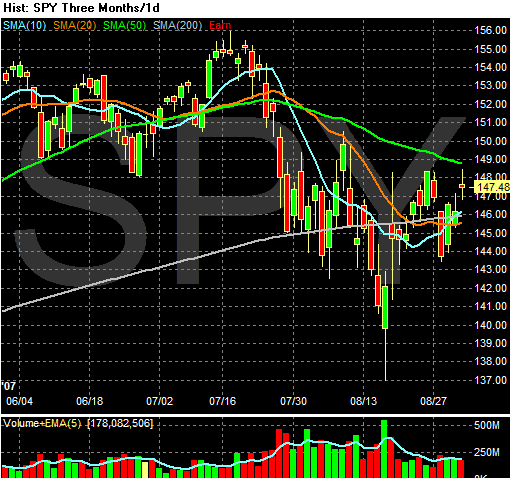
Here's a really sharp observation that I had missed. It comes courtesy of Alpha Trends. The S&P sure looks like it is forming an inverted had and shoulders pattern right now.
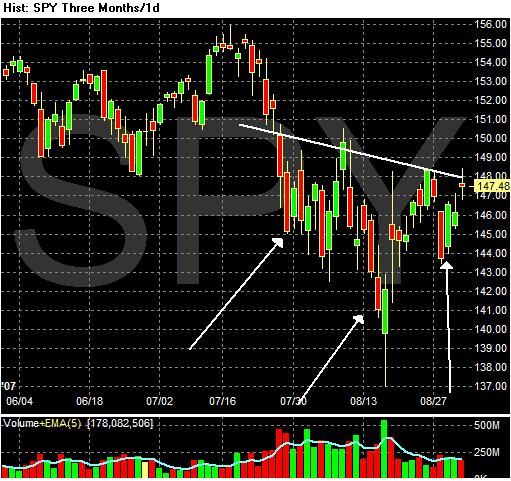
Let's add some fundamental girth to that analysis. Right now we know the market is expecting the Fed to cut rates. However, I think the jury is still out on that possibility. In Friday's speech Bernanake said he would not bail out lenders who made poor loans, but he would lower rates to help the economy if the problems in the credit markets slow economic growth.
It is not the responsibility of the Federal Reserve--nor would it be appropriate--to protect lenders and investors from the consequences of their financial decisions. But developments in financial markets can have broad economic effects felt by many outside the markets, and the Federal Reserve must take those effects into account when determining policy. In a statement issued simultaneously with the discount window announcement, the FOMC indicated that the deterioration in financial market conditions and the tightening of credit since its August 7 meeting had appreciably increased the downside risks to growth. In particular, the further tightening of credit conditions, if sustained, would increase the risk that the current weakness in housing could be deeper or more prolonged than previously expected, with possible adverse effects on consumer spending and the economy more generally.
Here's the way I read that paragraph.
1.)If the current situation in the credit markets continues the chances of the economy slowing increase. Note the word if at the beginning of that sentence.
2.)However, right now there is insufficient evidence of a broader economic slowdown that is severe enough to warrant Fed action.
Let's tie the the technical and fundamental strands together. From a technical perspective, we have a reverse head and shoulders formation forming. These occur at the end of a trend. So, the market may be forming a short-term bottom here. From the fundamental side, we have the Federal Reserve saying they will lower rates if -- going forward -- they see signs that the credit market problems are infecting the broader economy.
SO -- what are we looking for going forward to convincingly break the reverse head and shoulders formation? Any sign of an economic slowdown. And I think Barron's observation that this week's employment number is a really big key to future Fed actions is a dead-on accurate prediction.
Let me add one final caveat. The market will do everything it can to make an ass out out you. And the market has a vast array of tools at its disposal to make an ass out of you. On other words, the above analysis is nowhere near gospel -- it's just one possible perspective on things.

